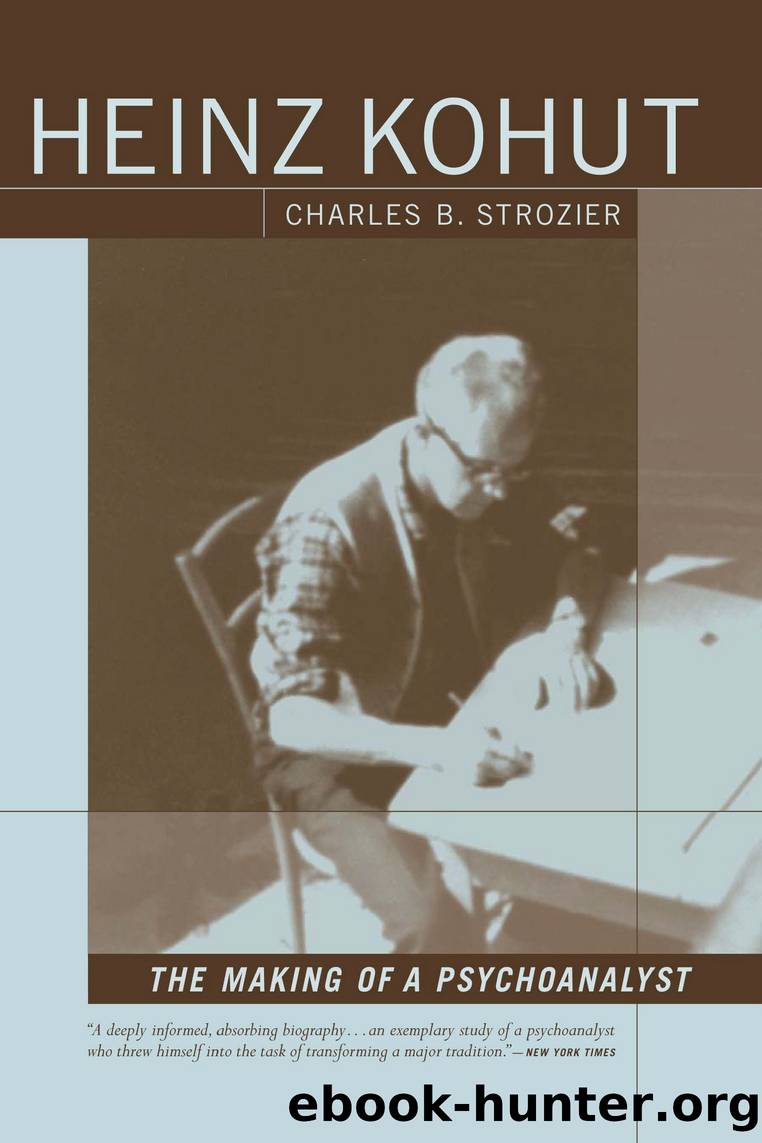Heinz Kohut by Charles Strozier

Author:Charles Strozier [Strozier, Charles]
Language: eng
Format: epub
Publisher: Other Press
Published: 2020-10-13T00:00:00+00:00
Twenty-one
ON RAGE
Perhaps the most common criticism of Kohutâs work is that he fails to deal with aggression adequately. In his emphasis on empathy, so the argument goes, Kohut directed attention away from human evil and the violent potentials in the self that are essential to grasp and confront if we are to understand the astonishing capacity of humans to engage in war, persecution, torture, abuse, and ordinary, garden-variety cruelty. For Kohut, it is said, things are sugarcoated. One loses entirely the crucial insights Freud gained into the âseething cauldronâ of id impulses. Even if one concedes, as most observers now would, that classical psychoanalysis as a form of treatment is only clinically relevant in radically modified form, Freud as a philosopher of the human soul properly understood and appreciated the varied forms of aggression. Kohut is uplifting, the critics say, but in the end superficial, naive, best fit for the surface, where Americans mostly dwell psychologically.
Such criticism drove Kohut to distraction. It was the kind of charge that led him to say his critics read between the lines of his work.1 His views on aggression differed from those of Freud, to be sure, but he hardly ignored the topic; he was, in fact, deeply concerned with the issue of aggression, both at the level of the individual and in history, and he had some original things to say about it. His strategic mistake may have been partly that he separated out his thoughts on the subject from The Analysis of the Self and then did not return to them in any systematic way in his last two books, especially The Restoration of the Self, which remains his most widely read work.2 Perhaps Kohut felt there was no need for reiteration, since he had absolute faith in the completeness of his one full-length discussion of the topic, âThoughts on Narcissism and Narcissistic Rage,â which he first delivered in New York as the A. A. Brill Lecture of the New York Psychoanalytic Society on November 30, 1971, and published the following year in the Psychoanalytic Study of the Child.3 There was no question in Kohutâs mind that this was the âbest paperâ he ever wrote.4 It brought together years of reflection and articulated a nuanced position about aggression that has yet to be fully appreciated in psychoanalytic theory or psychology in general.
Kohutâs concern with rage also had a powerful personal subtext. He began writing about rage during his 1971 summer vacation in Carmel as he awaited the dreaded diagnosis of cancer after postponing further tests to ascertain the cause of his hardened spleen; he then finished the paper that fall after the confirmation and initial treatment of the disease. 5 Kohut railed at the gods who sought to destroy him but took his misery to a higher level of human understanding.
Kohutâs rage paper begins slowly, in the rhetorical style he used in teaching seminarsâcircling, associating, warming to his subject. He describes two works of the great German writer, Heinrich von Kleist, and their relation to narcissism and rage.
Download
This site does not store any files on its server. We only index and link to content provided by other sites. Please contact the content providers to delete copyright contents if any and email us, we'll remove relevant links or contents immediately.
Blood and Oil by Bradley Hope(1531)
Wandering in Strange Lands by Morgan Jerkins(1374)
Ambition and Desire: The Dangerous Life of Josephine Bonaparte by Kate Williams(1347)
Daniel Holmes: A Memoir From Malta's Prison: From a cage, on a rock, in a puddle... by Daniel Holmes(1295)
It Was All a Lie by Stuart Stevens;(1265)
Twelve Caesars by Mary Beard(1258)
The First Conspiracy by Brad Meltzer & Josh Mensch(1140)
What Really Happened: The Death of Hitler by Robert J. Hutchinson(1131)
London in the Twentieth Century by Jerry White(1114)
Time of the Magicians by Wolfram Eilenberger(1091)
The Japanese by Christopher Harding(1086)
Twilight of the Gods by Ian W. Toll(1085)
Cleopatra by Alberto Angela(1063)
A Woman by Sibilla Aleramo(1055)
Lenin: A Biography by Robert Service(1046)
The Devil You Know by Charles M. Blow(987)
Reading for Life by Philip Davis(974)
1965--The Most Revolutionary Year in Music by Andrew Grant Jackson(925)
The Life of William Faulkner by Carl Rollyson(925)
